Ever wonder how one acronym could unlock a world of seamless connectivity and power? That’s the magic behind POE or Power over Ethernet. This clever innovation not only streamlines the way devices communicate but also simplifies their charging process. Imagine a workspace where cables are no longer sprawling in chaos; that’s the order POE brings to the table. By delivering data and electricity through a single cable, it revolutionizes office setups and tech infrastructures alike. Dive into this post as we unravel the layers of POE, ensuring your tech vocabulary is as charged as your devices.
Understanding the Basics of POE
Dual Functionality
POE technology is a game-changer in network design. It allows for power and data to travel through a single Ethernet cable. This dual function simplifies the cabling process. Devices like IP cameras, VoIP phones, and wireless access points use this tech.
A standard Ethernet cable carries both electricity and information with ease. Users can power up devices while transferring data without extra outlets or cables.
Simplified Installation
The advantage of POE becomes clear during installation. Devices can go where needed, not just where power lines exist. You don’t need an electrician to install new outlets for each device.
This flexibility means you can place security cameras in optimal spots for surveillance or set up networked speakers in areas that enhance audio distribution throughout a space.
Cost Savings
Using POE leads to noticeable cost reductions. Removing the need for additional wiring saves on materials and labor costs associated with traditional installations.
Moreover, since there’s no need for separate power supplies or AC/DC converters for each device, upfront equipment expenses also decrease.
How Power over Ethernet Transforms Connectivity
Simplified Cabling
Power over Ethernet (PoE) significantly reduces the complexity of electrical wiring. Traditionally, network devices require two separate connections: one for data and another for power. PoE combines these into a single cable. This simplification cuts down on installation time and material costs.
Businesses save money with fewer cables to purchase and less labor required for installation. For example, a company setting up an array of IP cameras can use PoE power over ethernet, avoiding extra outlets at each camera location.
Centralized Power
The ability to manage power centrally is a crucial advantage of PoE technology. IT administrators can control power from one central point using a Power over Ethernet switch or injector. This centralized approach streamlines operations.
Devices can be reset or shut down remotely, enhancing efficiency in managing network resources. An issue with a VoIP phone in an office can be addressed through the central hub without physically accessing it.
Enhanced Flexibility
Flexibility in device placement is greatly improved with PoE technology. Devices like security cameras and wireless access points are no longer tethered close to electrical outlets; they can be positioned where they serve best.
A retail store might place IP cameras at optimal spots for surveillance without worrying about nearby power sources—connect them via Ethernet cables that carry data and electricity according to specific PoE standards.
- Pros:
- Reduces cabling needs.
- Lower installation expenses.
- Cons:
- Requires compatible equipment.
With advancements such as higher-power delivery conforming to new PoE classes, more devices will soon benefit from this transformative tech feature.
Devices That Leverage POE Technology
Common Equipment
POE technology is not limited to a single device type. Wireless access points, for example, are prevalent in both homes and offices. They allow devices to connect to the internet without cables. IP cameras also use POE for both power and data transmission. This simplifies installation, as only one cable is necessary.
VOIP phones are another common application of POE. These phones can receive power and transmit voice data via the same network cable, eliminating the need for separate adapters or power supplies.
Power Sources
Network switches with POE capabilities can manage data connections while providing power directly through network cables. This reduces clutter and improves system reliability by centralizing power distribution.
POE injectors specifically add electrical power to a data cable for devices not connected to a dedicated POE switch. An injector can retrofit existing network installations with new POE devices without replacing non-POE switches.
IoT Adoption
The Internet of Things (IoT) thrives on simplicity and connectivity—which POE offers in abundance. Emerging IoT gadgets often integrate this technology because it streamlines their setup process.
Intelligent lighting systems, sensors, and control panels are increasingly adopting power over ethernet due to their flexibility in deployment scenarios where traditional power options are impractical or too costly.
The Benefits of Using Power over Ethernet
Centralized Power
Power over Ethernet (PoE) simplifies the delivery of electricity to devices. It reduces downtime by centralizing backup power solutions. In a PoE setup, ethernet cables transmit both data and power. This dual-functionality means fewer interruptions during outages.
A centralized UPS can maintain network integrity when the main power fails. Devices stay online without individual battery backups. For instance, a single UPS keeps all phones operational in an office with PoE-enabled phones during a blackout.
Enhanced Safety
Safety is paramount in electrical setups. PoE minimizes risks associated with traditional wiring methods. It manages low-voltage power delivery efficiently and avoids the need for multiple high-voltage outlets, which can be overloaded.
Using power over ethernet switches reduces electrical hazards as these switches ensure only safe levels of power are delivered to each device through the ethernet cable itself—preventing potential short circuits or electrical fires.
Scalable Networks
Network scalability becomes streamlined with PoE technology. Adding new devices doesn’t require additional electrical infrastructure; it’s as simple as connecting them via an ethernet cable to a PoE injector or switch that supports your required PoE standard.
The adaptability of this system allows for growth without significant rewiring efforts or increased costs related to conventional electric work. For example, expanding surveillance systems is straightforward since cameras can be placed wherever there’s a network connection without worrying about proximity to outlets.
Recognizing the Limitations of POE
Distance Boundaries
POE technology simplifies network installations by combining power and data delivery over a single cable. However, distance is a crucial limitation. The maximum length for a POE cable run is 100 meters. Beyond this point, both power and signal quality can degrade significantly.
Network planners must consider this restriction when designing systems. For instance, additional measures like POE extenders are necessary in more significant buildings or across campuses to maintain connectivity and performance. This constraint often means that direct cabling is not always feasible for every device needing network access.
Power Constraints
Another aspect to consider with POE is its power delivery capacity. While convenient for low-power devices such as IP cameras or wireless access points, it may fall short for more demanding equipment.
The current standard specifies different types of POE capable of delivering various levels of electrical power. Yet even the most robust variant has its limits, which might not suffice for high-power devices like PTZ (Pan-Tilt-Zoom) cameras or large display monitors.
This necessitates careful planning to ensure each device receives adequate power without overloading the system’s capabilities—a balance between need and available resources.
Compatibility Issues
Compatibility stands out as another challenge within the realm of POE technologies. Different standards exist—such as IEEE 802.3af (Type 1) and IEEE 802.3at (Type 2), and not all devices support all standards.
Mismatched components could lead to suboptimal functionality or complete non-operation—a situation no one wants after investing time and money into their network infrastructure. It’s crucial to match the correct type of POE with corresponding devices to sort results efficiently and avoid unnecessary complications.
Variations in POE: POE, POE+, and Ultra POE
Standard POE
Power over Ethernet (POE) simplifies network installations. It allows devices to receive both power and data through one cable. This reduces the need for additional wiring and power sources.
The original POE standard, IEEE 802.3af, supports up to 15.4 watts per port. This suffices for primary devices like IP cameras or VoIP phones.
Network Infrastructure Enhancement with POE
Energy Efficiency
POE, or Power Over Ethernet, is transforming how we approach network infrastructure. By integrating POE into existing networks, energy efficiency leaps forward. This technology allows data and power to travel over the same cable. It reduces the need for additional power supplies and outlets.
Buildings can cut down on energy consumption by using POE switches. These devices manage power allocation effectively across the network. For example, a company could install POE lighting that only activates when needed, saving substantial electricity.
Smart Integration
Intelligent buildings are prime examples of POE’s versatility. They use this technology to streamline control over various systems, such as lighting, security cameras, and HVAC units. A single POE injector can supply power to multiple devices while carrying data for operation.
This integration simplifies management tasks significantly. Facility managers monitor systems through one interface instead of juggling separate controls for each component.
Simplified Expansion
Adopting POE is not just about current benefits but also future-proofing networks. Expanding a network with traditional wiring methods often involves significant disruption and cost. With POE standards, expansions become more straightforward and less intrusive.
Adding new devices typically requires running new cables from a central power source; however, with Power Over Ethernet (PoE), you connect the device to an available PoE port on your switch or hub. For instance, if a business wants to add another VoIP phone or surveillance camera in their office space without having any nearby electrical outlets – they won’t have any issues thanks to PoE’s capability to deliver both data connection & electrical power via standard Ethernet cabling system already present within most modern buildings today!
Power Sourcing and Powered Devices in POE Systems
PSE Components
Power sourcing equipment, or PSE, plays a vital role in the functionality of a POE system. These components are responsible for injecting power into the Ethernet cabling. The most common PSE types include network switches with integrated POE capability and midspans, which stand between non-POE switches and PDs.
A typical scenario involves a network switch supplying power directly to connected devices. This simplifies infrastructure by reducing wiring complexity. An alternative is using a midspan device, which adds POE capability to existing network setups without integrated support. This allows for flexibility when upgrading systems.
PD Essentials
On the receiving end of the spectrum are powered devices, commonly called PDs. These encompass various end-user tools like IP cameras, VoIP phones, wireless access points, and more sophisticated IoT devices requiring data connection and electrical power.
The convenience offered by PDs stems from their ability to receive power over Ethernet cables. This minimizes the need for separate electrical wiring or outlets near each device location – an advantage especially useful in challenging or expansive environments where traditional electrical installation might be difficult or costly.
System Matching
Ensuring proper matching between PSEs and PDs is crucial for maintaining an efficient operation within a POE system. Compatibility matters not only in terms of power requirements but also regarding communication protocols across devices.
To achieve this harmony:
- Verify compatibility between PSE output capacity and PD input needs.
- Ensure correct negotiation protocols are supported on both sides to facilitate smooth power delivery.
For instance, if a high-powered security camera requires more wattage than what standard PSE can offer, it’s essential to pair it with appropriate equipment capable of delivering sufficient energy through the Ethernet cable without causing disruptions or damage due to underpowering or overpowering scenarios.
Differentiating Active and Passive POE
Active POE
Active Power Over Ethernet (POE) uses a sophisticated method to supply power. Devices communicate before any power is transferred. This ensures only compatible devices receive electricity.
PSEs and PDs perform a handshake protocol. They verify the amount of power needed and its availability. If incompatible, no power flows, protecting both devices from potential damage.
In an active setup, POE standards play a crucial role in compatibility. The standards ensure uniformity across different manufacturers’ products.
These checks are part of what makes active systems safer and more reliable for various applications.
Passive POE
Passive POE provides continuous power without communication between devices. It’s simpler but requires the users’ careful matching of PSE to PD specifications.
For specific device requirements, passive may be suitable due to less complexity in design. However, it lacks safeguards against mismatched voltage, which could harm equipment.
It’s often lower in cost than active solutions because it doesn’t need complex circuitry to check communications.
The choice hinges on several factors:
- Cost considerations favor passive when budgets are tight.
- Installation environments might demand the robustness of an active system.
- The device must dictate whether the simplicity of passive suffices or the advanced dynamic features are necessary.
Choosing between these two types depends on balancing safety with practicality and affordability.
Wrapping It Up
Power over Ethernet (POE) is more than a nifty tech term—it’s a game-changer for your network setup. Imagine fewer cables, streamlined power management, and devices humming along with the efficiency of a well-oiled machine. That’s the POE promise. From beefing up security systems to powering up VoIP phones, POE has shown its mettle. Sure, it’s got limits, but doesn’t every superhero? The evolution from POE to Ultra POE mirrors our tech cravings—more power, more performance.
Do gadgets that guzzle juice? Consider how POE can simplify your digital diet. Whether you’re decking out a smart home or upgrading an office network, remember this: POE could be the unsung hero you never knew you needed. So why not take the plunge? Explore POE options and watch your tech life get much easier—because sometimes, the best solutions are right under our noses. Ready to power up?
Frequently Asked Questions
What does POE stand for in networking?
POE stands for Power over Ethernet. It’s a technology that lets network cables carry electrical power to devices.
How does Power over Ethernet (POE) transform connectivity?
With POE, one cable provides data connection and electric power to devices like VoIP phones and IP cameras, simplifying wiring and reducing installation costs.
Can you list some devices that leverage POE technology?
Sure! Devices like wireless access points, security cameras, IP phones, and even some types of lighting can use POE tech for power and data transmission.
What are the main benefits of using 60w Power over Ethernet for signal transmission?
The key perks include reduced installation costs since you don’t need separate power lines; it also offers greater flexibility in device placement as they don’t have to be near electrical outlets.
Should I know about any limitations related to current, type, or life when using 60w POE?
Distance is a factor; typically, the max is 100 meters. Plus, not all devices support POE without an adapter. And there’s a limit on how much power can be delivered.
What’s the difference between variations like POE+ and Ultra POE?
These variations mainly differ in how much power they supply: regular POE is up to 15.4W per port, POE+ goes up to 30W, and Ultra PoE can offer up to 60W or more!
In a nutshell, what are active and passive POE systems in terms of current and type?
Active systems negotiate with connected devices, ensuring compatibility before sending power; passive ones send electricity without communication, which requires caution but is more straightforward.
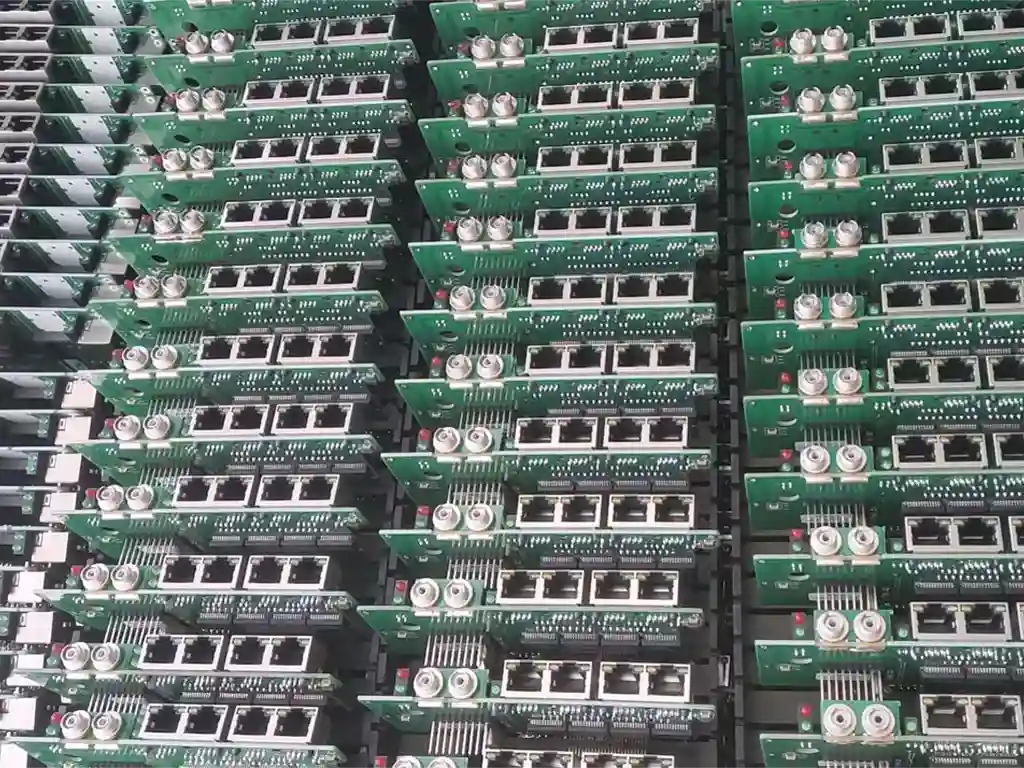
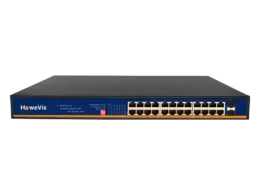
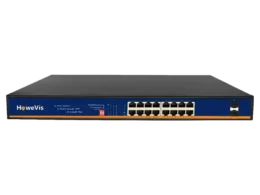
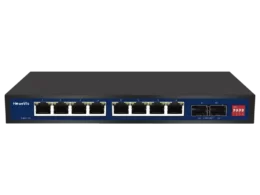
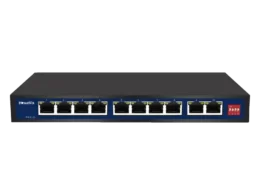
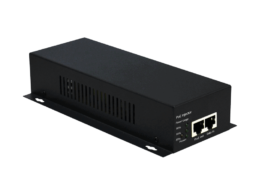
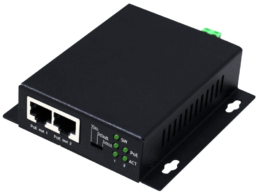
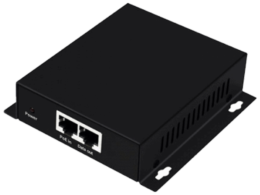



1 thought on “What Does POE Stand For? A Complete Guide to Power over Ethernet”
Wonderful web site Lots of useful info here Im sending it to a few friends ans additionally sharing in delicious And obviously thanks to your effort
Comments are closed.